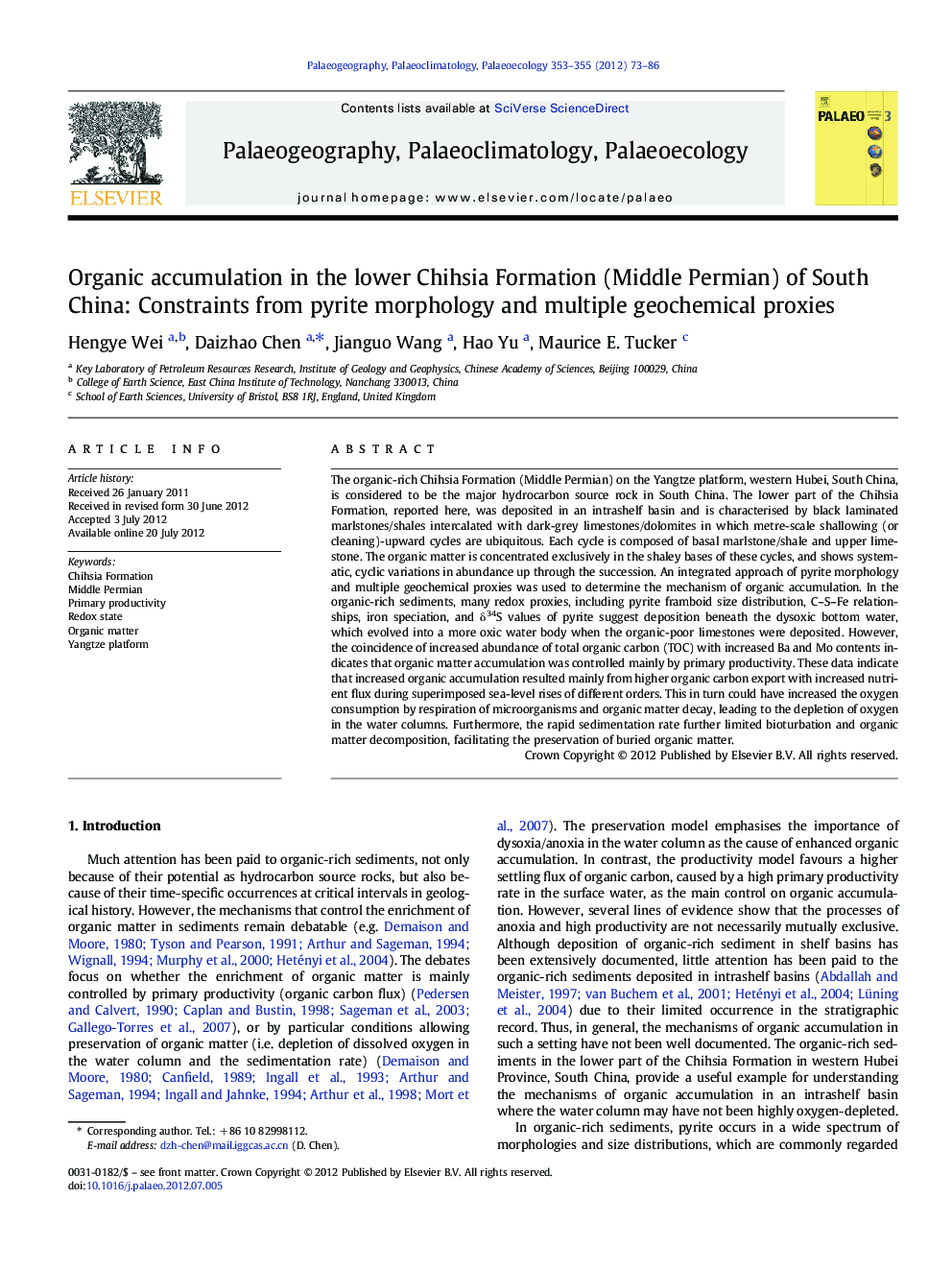| کد مقاله | کد نشریه | سال انتشار | مقاله انگلیسی | نسخه تمام متن |
|---|---|---|---|---|
| 4466793 | 1622224 | 2012 | 14 صفحه PDF | دانلود رایگان |

The organic-rich Chihsia Formation (Middle Permian) on the Yangtze platform, western Hubei, South China, is considered to be the major hydrocarbon source rock in South China. The lower part of the Chihsia Formation, reported here, was deposited in an intrashelf basin and is characterised by black laminated marlstones/shales intercalated with dark-grey limestones/dolomites in which metre-scale shallowing (or cleaning)-upward cycles are ubiquitous. Each cycle is composed of basal marlstone/shale and upper limestone. The organic matter is concentrated exclusively in the shaley bases of these cycles, and shows systematic, cyclic variations in abundance up through the succession. An integrated approach of pyrite morphology and multiple geochemical proxies was used to determine the mechanism of organic accumulation. In the organic-rich sediments, many redox proxies, including pyrite framboid size distribution, C–S–Fe relationships, iron speciation, and δ34S values of pyrite suggest deposition beneath the dysoxic bottom water, which evolved into a more oxic water body when the organic-poor limestones were deposited. However, the coincidence of increased abundance of total organic carbon (TOC) with increased Ba and Mo contents indicates that organic matter accumulation was controlled mainly by primary productivity. These data indicate that increased organic accumulation resulted mainly from higher organic carbon export with increased nutrient flux during superimposed sea-level rises of different orders. This in turn could have increased the oxygen consumption by respiration of microorganisms and organic matter decay, leading to the depletion of oxygen in the water columns. Furthermore, the rapid sedimentation rate further limited bioturbation and organic matter decomposition, facilitating the preservation of buried organic matter.
► Organic accumulation revealed by pyrite morphology and multiple geochemical proxies.
► Organic-rich sediments deposited in dysoxic water columns.
► Organic enrichment controlled mainly by the primary productivity.
► Productivity enhanced during superimposed sea-level rises.
Journal: Palaeogeography, Palaeoclimatology, Palaeoecology - Volumes 353–355, 1 October 2012, Pages 73–86